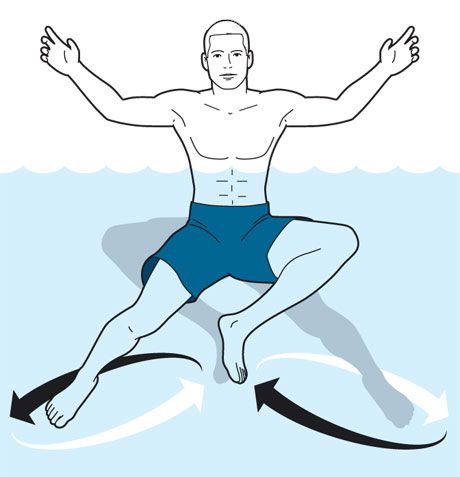
Water polo is an energetic, fast paced and fun team based game. Ultimately, it is a test of each team’s tactical and technical skill of passing, strength of throwing and endurance in the water. Because officially it is played in deep water, you are not able to stand with your feet touching the bottom of the pool. Instead you must use a special technique of treading water called eggbeater to propel your body out of the water, high enough to allow your arm to pass and catch the ball and score goals using one hand. The sport combines speed and strength, as well as teamwork and a high level of fitness. One outfield player can cover up to two miles in one game alone!
So how do you play water polo? Find out below.
Introduction to Waterpolo Rules
The main aim: there are goals at each end of the pool and the winner of the game is the team that scores the most goals by getting the ball between the posts.

Eggbeater: players are not allowed to touch the bottom of the pool and have to tread water throughout. Water polo players use a movement called eggbeater which is more efficient than the normal action of treading water.
The ball: players can move the ball by throwing it to a teammate or swimming while pushing the ball in front of them. They can only hold the ball with one hand, other than the goalkeeper who can use both hands.
Swim-off: the match starts with a swim-off. The ball is released in the middle of the pitch with the players lined up along their own goal lines. The first team to reach the ball has the first possession of the game.
After each goal, the team who conceded resume the match with the ball. All players for each team must be in their own half at the resumption of play.
Referees: Water polo matches have two referees with one stood on either side of the pool. The referees are in control of the game and are the only officials who can award fouls. Click here to find out more about fouls and the physicality of water polo.
How many players are on a water polo team?
Number of players: In senior water polo and most junior games, water polo teams consist of 13 players. Each team is allowed to have seven in the water at one time – six outfield players and one goalkeeper.

Positions: Except for the goalkeeper, players move continuously around the pool during a game. Most teams structure their outfield players with one centre back, one centre forward, two drivers and two wingers.
Water polo players need remarkable stamina because of the considerable amount of holding and pushing that occurs during the game.
Water polo is a fast paced game and can be quite draining, each team is also allowed a maximum of six substitutes (one goalkeeper and five outfield players).
Substitutes: Players can be substituted in and out of the game at any time although the goalkeeper can only be replaced by the substitute goalkeeper and the outfield players by designated outfield substitutes.
The player coming in to the game can only enter the match at the following times:
- during the intervals between periods of play
- after a goal has been scored
- during a timeout
How long does a water polo match last?
Under FINA rules, a water polo match is divided into four quarters of eight minutes.
However, because the clock is stopped when the ball is not in play, the average quarter lasts around 12 minutes. Each team is only allowed to hold onto the ball for a maximum of 30 seconds before shooting for the goal. If they haven’t done this then possession passes to the other team.
